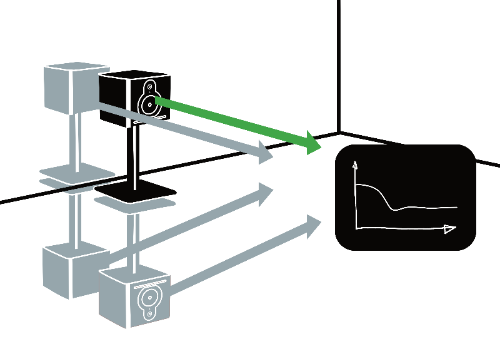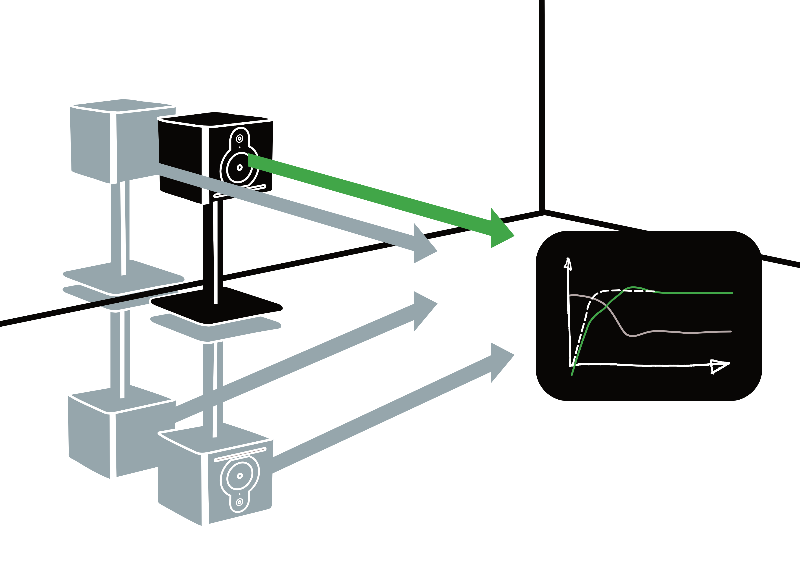
Bass without the boom
This is how a 'generic' loudspeaker, made to measure well in an anechoic chamber would look like when placed close to a wall.
There will be a huge amplification in the bass, followed by a sharp dip.

The fix
The logical solution is to take the inverse curve to cancel this unevenness out, and implement it into the loudspeaker itself.
By adding this roll-off in the bass, our speakers may measure slightly lean in the low register, however this is corrected for when placing the speakers close to a wall. Placing any speaker without this type of correction close to wall will result in a boomy and unnatural sound.

Up the bass
The frequency response of our speakers is adapted to utilize the sound reflected from the rear wall and the floor. Together, this reflected and direct sound creates the response curve we aim for. This principle provides reinforcement in the lower bass range, allowing us to achieve a substantial amount of bass from very small enclosures. This also makes wall placement an asset rather than a problem; most speakers require placement with distance from the back wall.
To summarise – Like many other manufacturers, we aim for a flat and uncoloured sound reproduction, but we have a more nuanced approach for reaching that goal.
